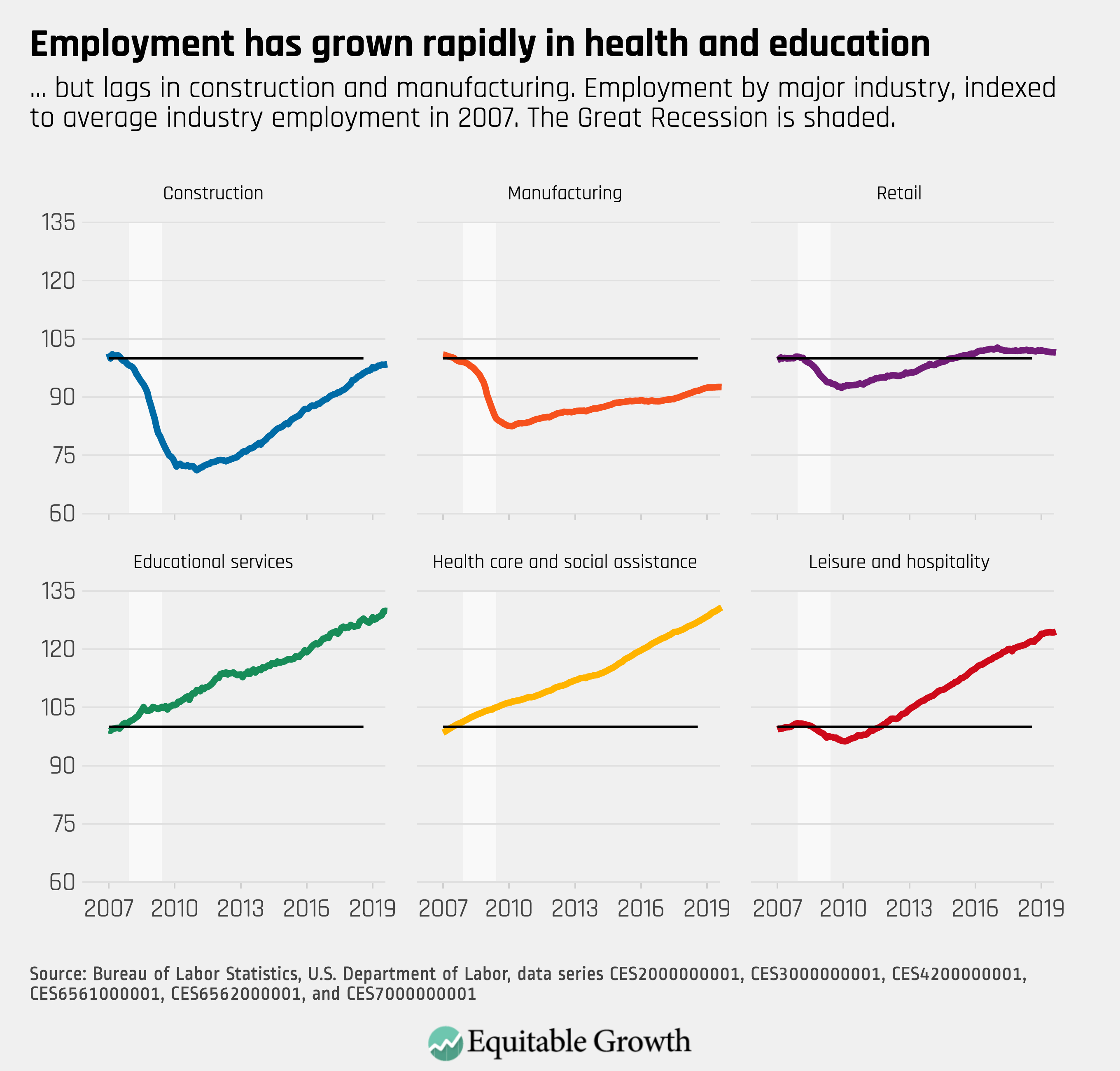Weekend reading: “Competition and employment” edition
This is a post we publish each Friday with links to articles that touch on economic inequality and growth. The first section is a round-up of what Equitable Growth published this week and the second is relevant and interesting articles we’re highlighting from elsewhere. We won’t be the first to share these articles, but we hope by taking a look back at the whole week, we can put them in context.
Equitable Growth round-up
The landscape of competition and consumer protection has changed and the Federal Trade Commission is trying to keep up with the times, writes Jonathan Sallet. In hearings conducted between September 2018 and June 2019, the FTC heard from experts and analysts on how things have changed and what the FTC can do to adapt the full spectrum of its competition work. Sallet compiles the suggestions from the hearings under five broad categories: growing market concentration, evolving business models, protecting competition as well as consumers, utilizing modern economic tools and analysis, and taking advantage of the full range of enforcement tools at the FTC’s disposal. Integrating the knowledge from these hearings into its day-to-day work will be essential for the FTC to continue its antitrust law enforcement in the modern economy.
The U.S. Bureau of Labor Statistics issued its monthly report on the U.S. labor market for September, showing that despite employment for prime-age worker rising to near pre-Great Recession levels, these gains are mainly in healthcare and education, while manufacturing and construction employment rates have plateaued and retail employment decreased. Likewise, the data show that there is no evidence that the current tight labor market is exerting upward pressure on wages as nominal wage growth remains below healthy levels. Raksha Kopparam and Kate Bahn put together five graphs highlighting these important trends in the monthly announcement.
Head over to Brad DeLong’s latest worthy reads for his takes on must-see content from Equitable Growth and around the web.
Links from around the web
The U.S. Census Bureau recently announced that inequality has grown to its highest point in more than 50 years, meaning that the gap between the richest and poorest Americans is at its widest point in decades. The numbers indicate that “America has not become a poor country but an unfair country,” writes Sarah Jones for New York Magazine. “The poor aren’t necessarily making less money, but as the wealthy get wealthier, people on the bottom end of the income scale are running in place,” she continues, arguing that we may have finally reached the tipping point on inequality in the United States.
As California lawmakers toy with the idea of implementing a public banking system, it wouldn’t hurt to take a look at North Dakota, where the nation’s only state-owned bank has been up and running for more than a century. Obvious differences (in size, economy, and population, to name a few) between the two states aside, “many of the characteristics of the modern economic landscape are eerily similar to that of a century ago when [the Bank of North Dakota] first passed: increasing income inequality and predatory practices on the part of financial institutions,” writes Will Peischel for Vox.
It would seem that wealth taxes are all the rage, as Democratic presidential candidates Sens. Elizabeth Warren (D-MA) and Bernie Sanders (I-VT) each recently announced their proposals for increasing taxation on the rich. Former Vice President Joe Biden is reportedly also weighing his options in this area. But, argues Ashlea Ebeling in Forbes, the wealthy may want to prepare for a change in the estate tax rather than a new wealth tax. The estate tax can be applied to a larger group of people and is already in place, albeit in a highly scaled-back position thanks to the Tax Cuts and Jobs Act of 2017, which more than doubled the estate tax exemption to those estates valued at $11.4 million and higher. Of course, the two are not mutually exclusive and could be implemented together, or alongside any of the multitude of other options available for taxing wealth.
Home health aides are increasingly sought-after to provide care for elderly and retiring Americans—and they have one of the most difficult jobs in the labor market—but these workers rarely receive the pay or protections they deserve. A new bill introduced by House and Senate Democrats aims to change that, however, by creating sustainable career paths for caregivers, including apprenticeships, on-the-job training, professional development, or mentoring, reports Alexia Fernández Campbell for Vox. These supports will be essential given that the U.S. Bureau of Labor Statistics estimates a 41 percent increase in the number of available home caregiver positions—1.2 million more than the current 2.9 million—by 2026.
Friday Figure

Figure is from Equitable Growth’s “Equitable Growth’s Jobs Day Graphs: September 2019 Report Edition,” by Raksha Kopparam and Kate Bahn.
